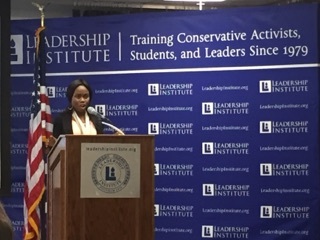 Halloween is fast approaching and everyone’s abuzz with excitement for the holiday -- costumes, haunted houses, and more! For me, haunted houses and other such Halloween thrills rank on the same level as fear of public speaking. In fact, did you know that 75% of the world’s population fears speaking in front of an audience? So, how can we help remedy this large and far-reaching issue?
Halloween is fast approaching and everyone’s abuzz with excitement for the holiday -- costumes, haunted houses, and more! For me, haunted houses and other such Halloween thrills rank on the same level as fear of public speaking. In fact, did you know that 75% of the world’s population fears speaking in front of an audience? So, how can we help remedy this large and far-reaching issue?In this post, I will teach you not only how to face your fear, but also how to successfully create and to execute a memorable, strong speech.
Facing your fear of public speaking comes down to mindset -- plain and simple. In fact, it is scientific.
Bruna Martinuzzi, president and founder of Clarion Enterprises Ltd., explains in an article how our brain doesn’t process fear in different manners. “Understanding that our brain can't tell the difference between a real threat (a pack of wolves about to attack you) and an imagined threat (a group of your peers watching you present) is the first step to overcoming the fear. This awareness can help you manage the ‘false alarm’ that happens in the absence of real danger.”
Martinuzzi goes on to explain how you can train yourself to fend off the “false alarm” by doing something as minute as taking a deep breath and reminding yourself that this is just that: a “false alarm.” Once you have done this (and have slowed your heart rate down), you are ready to begin telling your story -- your speech.
The first step in formulating your story is to know your audience. No preparation in the world will be worth anything if you don’t know your audience. The style, length, expectations, and flow of the speech depend on your knowledge of the audience.
Know your target demographic, understand the expectations of the speech (length of time given to speak, possible outcome or lesson learned, etc.), and what amount of creativity may be deemed acceptable (PowerPoint presentation or other forms of media).
After you have analyzed your audience, you may now prepare your content.
Your content should, at the very minimum, accomplish the expectations of your audience. At most, your content should exceed the audience’s expectations. But, how do you go about accomplishing this?
Tell a story!
Now, you may be thinking “I won’t be talking to a kindergarten class;” but, don’t think about it in that manner. Instead, realize story-telling is how the world’s history has remained alive. See the value in stories.
Boundless.com correctly points out how “stories are universal in that they can bridge cultural, linguistic and age-related divides.”
If that hasn’t convinced you, think about the lectures and conversations you remember best. You remember the professor who began with a stark sentence and attracted everyone in; only to proceed with a well-flowing body and a “killer” ending. You remember a story!
Write your main points and statistics out and memorize them, but let the rest flow. You don’t want to have learned your speech. Word for word, only to freeze midway.
Remember, stories (just like your speech) should feel natural. Now, go out and conquer your fear.
If you wish to learn more about how to conquer your fear, attend Leadership Institute's upcoming Public Speaking Workshops. LI also offers a Public Speaking, Advanced Workshop. To register for these workshops, please click here.